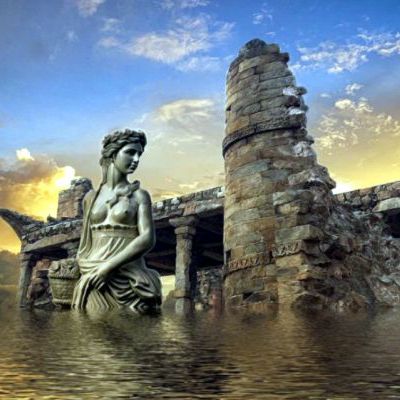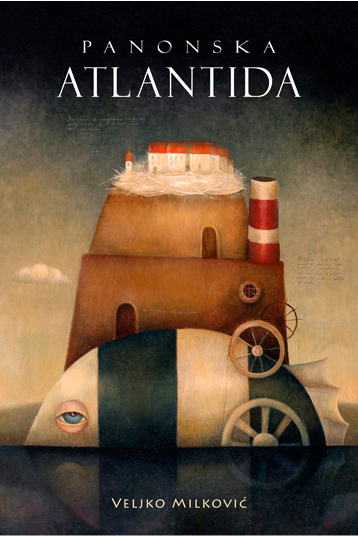Historical writings and hypotheses about the location of Atlantis
Based on everything we have considered so far, we can conclude that the pre-flood society that existed in northern Turkey and the surrounding areas, and which was destroyed by the Black Sea spill, was much more advanced and interesting than we could have expected so far.
And its key features, such as the cult of the bull, the matriarchal system of kinship, the exploitation of the reproductive processes of animals and plants, and extremely advanced craft skills, survived for the next few thousand years.
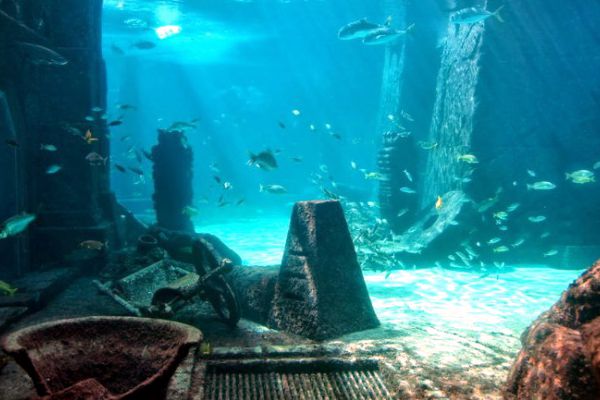
Picture 1. Artistic expression of the flooded Atlantis
When James Mellaart discovered the unusually developed pre-flood city of Catal Hüyük, he already thought that such progress could not have taken place in isolation, but that there must have been something much larger in its background. And as we have seen, the pre-Flood kingdom of the Mother Goddess was really great. This leads us to assume that much has not yet been discovered, either because the answers lie in the depths of the Black or Mediterranean Sea, or for some as yet unidentified reason.
All this raises an interesting question. Are some of the disturbances that led to the postglacial sea level rise - that is, the great Black Sea flood, what caused the disappearance of the Tunisian lake Tritonis, as well as other localized floods, the cause of the flood legend, but also the famous story of the sinking of Atlantis?
The first source - Plato
In the middle of the 4th century BC., the Athenian philosopher Plato, in his two dialogues, Timaeus and the unfinished Critias, told the story of the lost continent, which he attributed to the Greek statesman Solon, who died around 560. BC. Thirty years before his death, around 590 BC. no., Solon visited the then Egyptian capital Sais in the Nile Delta, a city that was flourishing during the First Dynasty, although no ruins have been preserved from it today. There, Solon befriended the Egyptian priests who served in the ancient temple of the goddess Neith, the ‘red’, ‘Amazonian’ goddess we mentioned earlier was an ancient Egyptian copy of the great goddess Mother.
Saish priests told Solon that the goddess, "who loved war and wisdom equally" (and, as they believed, was the counterpart of Greek goddess Athena), founded their city in ancient times and founded laws, crafts and activities. Furthermore, they told him that they had written records from past times, including legends about major floods and other disasters. Some of these records mention “an island situated in front of a strait which you [Greeks] call the Pillars of Hercules [the Gate of Gibraltar].
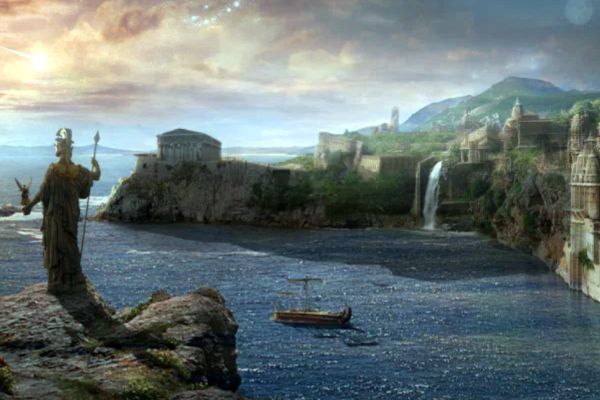
Picture 2. Artistic expression of Atlantis panoramic view towards the sea
That island was the center of a "great and miraculous" kingdom ruled by ten kings, ie five twins. That empire ruled "the team and several other islands as well as other parts of the continent," and was "larger than Libya and Asia combined." But then: "Due to terrible earthquakes and floods, during a single day and the next disastrous night, the island of Atlantis sank into the sea and disappeared. Therefore, the sea is now impassable and unexplored there, because the sunken island left behind shallow and muddy bottom. "
The first assumptions of the location of Atlantis and historical sources
Any serious discussions about Atlantis are prevented by the fact that this story has been circulating among sensationalists for more than a century, and that eminent scientists have been reluctant to mention it. In 1882, the American lawyer and politician Ignatius Donnelly, in his bestseller Atlantis: the Antediluvian World, claimed that Atlantis was a large island in the Atlantic Ocean and the cradle of all civilizations of the world, which before 9600. BC lay near the Gibraltar Gate.
Donnelly believed that Atlantis was the source of all the greatest inventions of civilization - agriculture, textile production, navigation, letters, compasses, and even gunpowder. In addition, he claimed that the existence of ancient Atlantis is evidenced today by a large submarine mountain range, the Mid-Atlantic Reef. Likewise, some related features of civilizations on both sides of the Atlantic, such as the pyramids, also point to a common source - the Atlantean civilization.
Subsequent scientific discoveries tragically undermined Donnelly’s claims. For example, geophysical evidence tells us that there could never have been such a large, populated continent on the Mid-Atlantic ridge, which sank at least 60 million years ago. And the Egyptian and Mexican pyramids have been separated for more than three thousand years. However, that did not discourage many from writing books on the topic of "Atlantology", which today already exceed the number of 2000. And there are almost no people and places on Earth that were not associated with that lost civilization. Among them E. S. Ramage in his book Atlantis: Fact or Fiction? states the following: "Goths, Gauls, Druids, Egyptians and Scythians… Mediterranean, Sahara, Caucasus,… South Africa, Ceylon, Brazil, Greenland, British Isles, Netherlands and Prussia." British Army Colonel John Blashford-Snell is reportedly looking for her today in Bolivia. It is therefore not surprising that even a great pioneer in the study of the effects of postglacial sea level rise, Cesare Emiliani, indirectly assumed that these phenomena and the story of Atlantis may be really connected, to which his fellow scientists really fell harshly.
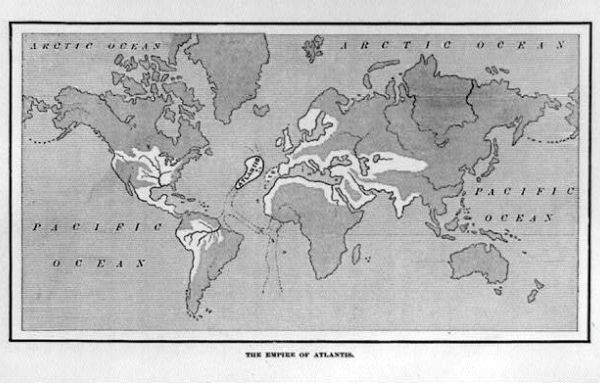
Picture3. Presumed location and map of the Kingdom of Atlantis from Donelly's book Atlantis: the Antediluvian World, 1882
On the one hand, it is very important, as in the case of the flood stories, not to interpret Plato's story as scripture, but also as a complete fabrication. For example, since the Egyptians before 3000. BC. they did not know the letter, the claim of the Egyptian priests that Atlantis was destroyed nine thousand years before their time, we could more freely interpret as ‘several thousand years before 590. BC. Furthermore, although the name Atlantis itself often assumes that Plato’s Island was in the Atlantic Ocean, the eminent classicist, J. V. Luce, points out that this is not necessarily true:
The name Atlantis is extremely misleading. Atlantis does not come from the name of the Atlantic Ocean. Linguistically, both names belong, so to speak, to the same generation as brother and sister, and both come from the name of Titan Atlas, who carried the celestial heavens on his back. In Greek, these are adjective forms of the name Atlas, meaning Atlantis (island) and the Sea of Atlantis… If you decide, therefore, when trying to determine its location to start from the name Atlantis, you should consider where the mythical Atlant was originally located.
This claim was recently corroborated by archaeologist Peter James. Based on Greek mythology, he determined the locations of various members of the Atlantean family. Atlantis' most famous brother was Prometheus, when the gods punished him by nailing him to a rock in the Caucasus, located on the southeastern side of the Black Sea, where an eagle pecked at his liver. Furthermore, Atlantis' mythical mother was Asia, whose name the ancient authors mostly associated with Princess Lydia on the west coast of Turkey, and not some country near the Atlantic Ocean. Also, six of Atlanta's seven daughters were associated with the area of present-day Turkey, and one of them, for example, was the mother of Dardanus, the ancestor of the Trojans.
Furthermore, the legendary Atlantean father was called Iapetus, when Robert Graves and other scholars identified him with Japheth, one of Noah's three sons. As Chapter 10 says. The books of Genesis, Japheth's sons were: "Homer, Magog, Madai, Javan, Tubal, Meshach, Tiras." Today's Chechens claim that Magog was the ancestor of the Black Sea tribe that separated after the Flood, with one part inhabiting the areas north of the Black Sea and the other areas north of the Caspian Sea. The Madeis are associated with the Caucasian Kurds, and it is assumed that the Greeks descended from the Javan. We have previously established that Tubala is connected with the Tibarens from the northern coast of Turkey. We also connected Mešak with the Turkish Moshans or Phrygians. Although much more vague, Tiras could be associated with the Tyrrhenians or Etruscans, the largest power in 1st century BC Italy. no., which also showed some strong elements of the culture of the Mother Goddess and whose language, which to this day has not yet been fully deciphered, we have found to contain similarities with the language of the ancient inhabitants of Lemno and probably originated in Turkey.
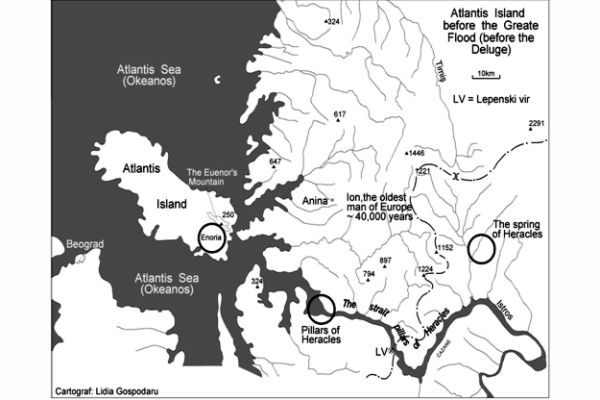
Picture 4. The location of the Pillars of Hercules in the Balkans and the theory of Pannonian Atlantis
Therefore, most of the areas inhabited by these peoples were located on the shores of the Black Sea or in its vicinity, not even close to the Atlantic Ocean. And even the hints of the Pillars of Hercules from the legend of Atlantis do not necessarily point to a location around the Gibraltar Gate. As Peter James points out, the Roman writer Servius observes the following in his commentary on Virgil's Aeneid: "We pass by the Pillars of Hercules in the Black Sea as well as by the Spanish."
All this, however, coincides with Plato's description of the basic claims of the 'Atlantean' civilization, which share some striking similarities with the claims of the previously mentioned post-flood cultures of the goddess Mother
The state system and appearance of Atlantis
Thus, for example, it is worth mentioning that Atlantis was allegedly ruled by "five pairs of twins", which evokes the memory of an unusual double statue discovered in the pre-Flood Catal Hüyük and other sites, as well as royal twins similar to the Kabirs, who are again associated with goddess cultures. as for the Atlantean twins, Atlantis, as the "firstborn of the oldest twins," was obviously the eldest and, therefore, had the legal right to inherit his mother's house and the surrounding land, which was "the largest and the best." This indisputably points to the law of matriarchal inheritance, which we have found to have prevailed in the cultures of the goddess from Turkey to the Berber Sahara. It seems that Atlantis, as the eldest son and nine other princes, were subject to pre-determined, written laws, which regulated their mutual relations. As the Egyptian priests told Solon:
There were a number of special laws which bound several kings whose names were inscribed on temples; but the most important among them was the one who forbade them to wage war with each other and ordered them to come to each other's aid if any of their cities tried to overthrow the royal house.
It was a nonaggression pact between the Atlantean kings, identical to that which, as we mentioned before, existed between the Canaanite-Phoenician city-states, and probably between the Eteocratic city-states, given that their cities had no walls for defense against naval attacks.
Also, the Sais priests clearly explained to Solon that Atlantis, as befits an island, was a maritime civilization. As for the five twin kings, they told him the following:
“They, like their descendants, have inhabited and ruled numerous islands on the high seas for generations; and, as we have already said, they ruled the areas that stretched between [the pillars of [Heracles]], all the way to Egypt and Tyrrhenia [Etruria]. ” we can conclude that the Atlanteans, like the Canaanites / Phoenicians, traded with distant lands. If we recall the Canaanites / Phoenicians who, as we said in the last chapter, built large ports on their island bases, the Atlanteans reportedly:
"… In the sea... they drilled a canal ... 90 m wide and 30 m deep, and fifty stadia long, which reached the extreme limits [of their island], thus creating a passage to it across the sea, which became a port; they left an opening wide enough for the largest ships to pass through… docks abounded in triremes and maritime shops… canals and the largest ports were full of ships and merchants from all countries, causing the deafening noise of human voices, rattles and murmurs to resound day and night . "
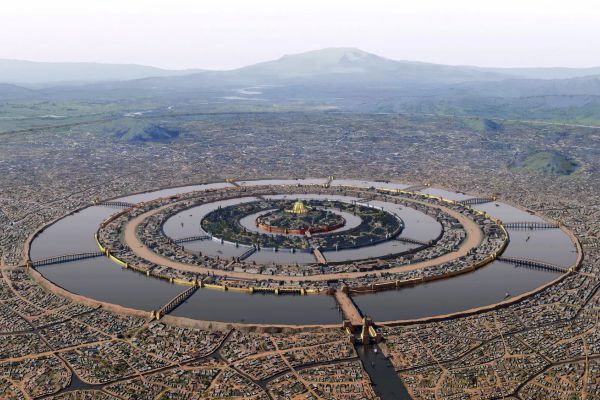
Picture 5. Presumed appearance of the city of Atlantis
The Sais priests further told Solon that the Atlanteans "dug out of the ground everything that could be found in it." It is obvious, then, that the Atlanteans were also skilled metallurgists. Furthermore: "… wood for carpentry was in abundance, and there was enough food for domesticated and wild animals… and a variety of fragrant things growing in the ground, from roots to plants, trees or fruit and flower oils, flourished in that the country; and there were cultivated fruits. "
From this we can conclude that the Atlanteans were also skilled carpenters, herders and farmers. Sais priests claimed that the Atlanteans worked the stone and were experts in hydraulics:
"Stone... was excavated from the ground in the center of the island... There were white, black and red stone... Some of their buildings were simple, while others were built of colorful, eye-pleasing stones... They also built canopies, some of which were open. and others vaulted, so that they could be used as warm baths in winter… The rainwater was directed to Poseidon's meadow, where various beautiful and tall trees grew, while the rest was covered with aqueducts that stretched along the bridges to the outer circles. "
As James Mellaart pointed out, the buildings at Catal Hüyük were painted white, black, and red, and many authors also noticed striking similarities between the Atlantean and Eteocritic plumbing systems. Furthermore, the Atlanteans allegedly used horse-drawn carriages in warfare:
"Residents" had leaders who were assigned to them in accordance with their districts and villages. The leader was obliged to secure one-sixth of the chariots, so that there were a total of ten thousand chariots; he had to provide both horses and riders for them, as well as two draft horses without a cart, along with a rider who would be able to fight as a pawn, carrying a small shield and who would have a chariot driver, who would stand behind the armored car to steer the two horse."
It is reminiscent of horse-drawn chariots used by the Canaanite peoples of North Africa and their coastal city-states in the eastern Mediterranean. The Atlanteans reportedly also had a racetrack where horse races were held. The central temple of the Atlantean Empire was dedicated to Kleita and Poseidon, the founders of the royal dynasty. It is interesting that Plato mentions Kleita's name before Poseidon's, stating that she was a higher deity, which corresponds to the matriarchal system of inheritance, which prevailed among the post-flood peoples of the goddess. In other respects, however, Plato seems to have focused more on the cult of Poseidon, since he came from a patriarchal culture.
The central landmark of the Atlantean cult was allegedly the "pillar of orichalcura" which was located in the center of the island, in Kleitin and Poseidon's temple, which can be compared to the custom of respecting the pillars ingrained among the mentioned peoples. The founders of the Atlantean dynasty wrote laws on that pillar, such as the one on mutual non-aggression, to which the kings themselves were subject. And "alternately every fifth and sixth year" the kings held a special ceremony in the temple, in which the pillar obviously played a major role. The Sais priests told Solon:
"Bulls moved freely inside the temple" and ten kings used to stay in the temple, where, after prayer, "they hunted bulls without any weapons, only with the help of sticks and nooses. And the bull they would catch, they would lay on the top of the pillar and slaughter him there, so that his blood would flow down the holy inscription… “
After that, it would seem, they would roast the bull's limbs and offer them as a sacrifice to the gods, while they mixed his blood with wine, which the rulers would then drink in honor of the gods, swearing to protect the laws of their ancestors.
Scientists such as Robert Graves, J. W. Luce and others have rightly noted that this description of kings in bull hunting is reminiscent of the bull-jumping rite depicted in a fresco from the Eteocritic city of Knossos. Just as there was a special area where Cretan bulls moved freely and where bull-jumping rituals were performed somewhere inside the holy palace at Knossos, something so certain certainly existed in the temple on Atlantis. Furthermore, it seems that the Atlantean kings, as in the Eteocritic rite, had to adhere to strict rules, such as the prohibition of using sharp weapons to lure the bull to the place where it will be sacrificed, except for sticks and nooses.
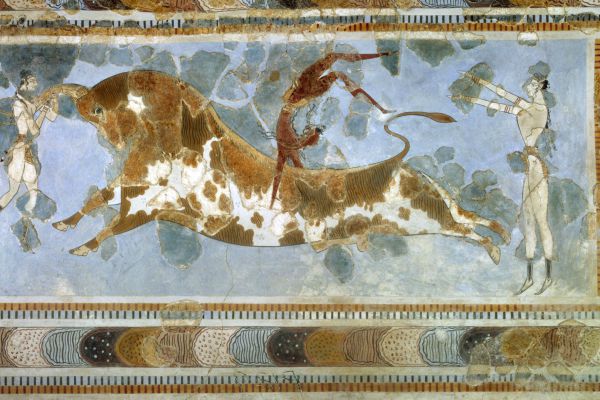
Picture 6. Demonstration of the ritual of jumping the bull from the Holy Palace in Knossos
This is faithfully shown on two golden cups from the middle of the 2nd century BC, discovered in the royal tomb at Wafi near Sparta. As Robert Graves points out, Sparta was a city-state in which the dual system of the kingdom - as well as the equal participation of women in wars - remained even after the establishment of the Indo-European patriarchal form of society in other countries. In any case, the first of the two cups mentioned shows two men (probably two kings), who seemingly unsuccessfully try to lure the bull into the trap using only nets and ropes. We see them flying through the air like rag dolls, while the bull, enraged by their insolence, wildly throws them up. At the second cup, however, the hunters decided on a different, much more successful approach. Namely, they try to attract and calm the bull with a cow, which allows one of the men to easily restrain him.
It is clear from these scenes that the intelligent use of sex overcomes the brutal force. It seems, therefore, that the people who painted the cups from Wafi, the Eteocricians, as well as the still mysterious Atlanteans today, believed that the bull should not be sacrificed with bloodshed. This inevitably raises the question of whether this ritual, with all the accompanying dangers, originated from an older, perhaps pre-flood period, when people learned to domesticate cattle.
In fact, some connections have been discovered between the cultures of western Turkey and the Atlantean ritual of sacrificing a bull on a pole. Peter James discovered a coin minted in Troy in Roman times, which shows a bull hanging on a pillar, while on its left side stands the goddess Athena, in whose part, apparently, this great animal was sacrificed. It is known that the Locridian priestesses from the matriarchal tribe of Lokran, originally from Turkey, served in the temple of Athena in Troy. Members of that tribe, who later moved to southern Italy, worshiped the great goddess Mother. Such clues, therefore, suggest that the story of Atlantis is not just the fruit of Solon's or Plato's imagination, but is certainly based on the real, though forgotten society of the great goddess Mother, which was destroyed in a catastrophic flood, although we do not know exactly where and when.
More assumptions about the location of Atlantis
The similarities between the Trojan and Atlantean bull cults for Peter James were so ‘indisputable’, that he assumed that the story of Atlantis originated in western Turkey. According to his view, made just before the publication of Ryan and Pitman's hypothesis of a Black Sea flood, Atlantis was most likely the lost Phrygian city of Tantalus, which he placed east of Izmir on Turkey's west coast, near Mount Sipylus. it seems to be the same lost city spoken of by Pausanias, a Greek travel writer from the beginning of the 2nd century AD, who notes the following in his discussion of earthquakes:
"A similar fate [i.e. an earthquake] struck a city on the Sipylus Mountains that disappeared into the abyss, and from that crack in the mountain water broke out and the abyss became Lake Saloe. The ruins of the city could be seen at the bottom of the lake until they were covered by a torrent of water. ”At the foot of the Sipylus Mountains, indeed, until recently, there was a lake that was later turned into agricultural land.
This would mean that there could indeed be an ancient city there, which sank due to some seismic disturbances common in western Turkey - although it is not certain whether it was the legendary Atlantis.
However, before James's theory of "Turkish Atlantis", some scholars noticed great similarities between the rituals of sacrifice of bulls, allegedly performed by the Atlantean kings, and the rituals that existed in Crete in the time of the Eteocrats. As early as 1909, when Arthur Evans was filling newspaper articles with his discoveries at Knossos, a scientist from Queen’s University in Belfast, K. T. Frost, published the following article in the Times:
“The great port [of Atlantis] with its ships and merchants who came there from all lands, well-groomed bathing areas, a racetrack, and bull-sacrificing rites, is entirely, though not exclusively, Minoan; but, when we read how "in Poseidon's and [Kletin's] temple" a bull [is hunted] without weapons, but only with sticks and nooses ", it is without a doubt a description of the bull arena in Knossos, which delighted foreigners and encouraged the legend of the Minotaur. “And Robert Graves wrote the following in the 1950s:
"From some details of Plato's description, such as the sacrifice of bulls on a pole and the systems of exchanging hot and cold water in the Atlantean palace, it is clear that we are talking about the Cretans, and not some other people."
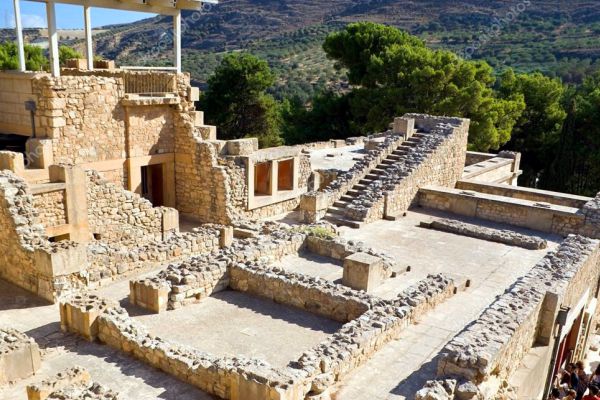
Picture 7. Archaeological site of the Minoan civilization
Contrary to Frost and Graves' enviable knowledge, the main difficulty in trying to identify Atlantis with Eteocritic Crete stemmed from the fact that there was no evidence that a diluvial catastrophe of such proportions had ever occurred in Crete that destroyed Atlantis. However, in the late 1960s, Greek archaeologist Spyiridon Marinatos began excavations on the Aegean island of Teri, discovering irrefutable evidence of a volcanic eruption that occurred around 1500. pr. no. The earthquake destroyed the eteocritic settlements on the island. As claimed by Dr. James Mellaart, there is another, hitherto unpublished text from the same period, originating from the province of Arzava in western Turkey, which describes how the exiled Terans later settled on the island of Rhodes. And considering the scale of that catastrophe, its consequences undoubtedly affected Crete, which is located 97 km south of Tera. Since tsunamis, or large tidal waves flooding the surrounding shores, are one of the most devastating consequences of such volcanic eruptions with a hotspot in the sea, we can logically explain how the Eteocrats, if they were indeed Atlanteans, could have survived the catastrophe that befell Atlantis. This theory was put forward by Marinatos himself, and was soon confirmed by the Greek seismologist A. Galanapoulos, the classicist J. V. Luce, and the archaeologist Nicholas Plato.
A third possible explanation, strongly advocated by Robert Graves half a century ago, is that Atlantis may have been the Amazon city of Chersonese, which, like the legendary Atlantis, was located on an island. Although Chersonese is known only from myths, we will recall that Diodorus of Sicily, who knew that the Black Sea was once a lake, wrote that it was located in the center of Lake Tritonida in North Africa, and that in the 3rd century BC. no. destroyed in the flood. Earlier, we assumed that some inhabitants of the area around the Black Sea may have moved to that "lost" part of North Africa, immediately after the Black Sea flood. Sir Arthur Evans, who excavated Knossos, although unaware of any scientific evidence of the disappearance of part of the old coast of Tunisia, always believed that much more advanced Eteocricians came from Libya, a country which for him, as for the ancient Egyptians, was safe. included Tunisia. From the point of view of the Egyptians, Tunisia can undoubtedly be located "in front of the Pillars of Hercules" (in front of the Gate of Gibraltar), where the Sais priests placed Atlantis. And although the Egyptians were not great sailors, it is reasonable to assume that the Sais priests were familiar with the great earthquake that struck the North African coast where their distant ancestors lived.
Furthermore, Herodotus writes that in the 1st century BC. no. in the far west of North Africa still lived a people named the Atlanteans or Atarans, who probably inhabited the area of the missing Lake Tritonide. And Diodorus of Sicily, who lived in Sicily and therefore probably had reliable, local legends, also described that people as "very civilized". These were obviously not Amazons, since, as Diodorus writes, they were originally at war with them. But as we learn from the same source that the Amazons made a friendly alliance with the Atlanteans around the time before the disappearance of Lake Tritonida, Chersonese may have been an Atlantean and Amazonian city at the time of its sinking. According to Herodotus, the inhabitants of that Tunisian part of North Africa respected, apart from the warrior goddess Mother and Poseidon, as well as the Atlanteans, as Solon learned from the Saxon priests. Furthermore, the so-called the phase of the ‘flying gallop’ in art, as Henry Lhote called it, which is also represented by the Tassilian drawings on the rocks. In Herodotus' time, the North African people he calls the Garamancans, whose name, as well as the Turkish naval people, the Carians, Robert Graves associated with the great goddess Mother Carr, reportedly still used four-wheelers in attacks on cunning natives.
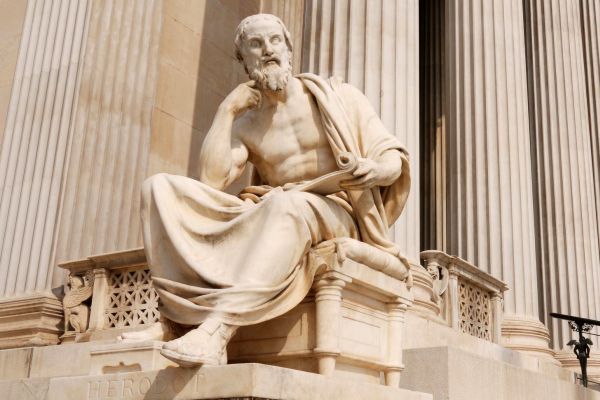
Picture 8. Herodot
Thus, the story of Atlantis may have really originated in the "lost" capital of the kingdom of the goddess, founded by the descendants of the flood peoples, and which was destroyed in a catastrophic flood in a certain period after the flood and before about 3000. BC, when the Mediterranean Sea swallowed up a large part of the then coast of Tunisia. If this is true, then some survivors may have fled to Crete, which was annexed to the kingdom of the goddess, where they assimilated with the Eteo-Cretans and, thus, strengthened their culture.
However, as we initially advised, we should not overestimate any interpretation of Plato's story of Atlantis, which has experienced too much distortion to be considered absolutely credible. First of all, there is a lack of an Egyptian text that would corroborate what the Sais priests told Solon. And, although it may indeed embody a lost memory of how and where in North Africa or elsewhere, survivors of the Black Sea flood may have temporarily settled after the flood, we have yet to prove it.
By comparison, related flood stories are much easier to back up. Namely, it is an indisputable fact that many of these stories were written several hundred years before Plato's birth, in preserved texts. And considering that we know that the Black Sea flood really happened, these texts were entirely transmitted on the basis of older oral traditions. The Sumerians and Babylonians immortalized them a long time ago on cuneiform tablets. the Jews wrote them down in Torah scrolls, and the Greeks, having established their alphabet, made it clear that they, too, knew the story.
As we approaching the 1st century BC - about five hundred years after the Black Sea flood - the following question arises: to what extent was the memory of that flood preserved at that time, which event has been irrefutably confirmed by science today?
For more information on the hypothesis of the location of Atlantis in the Pannonian Basin, read
Pannonian Atlantis
by Veljko Milković
